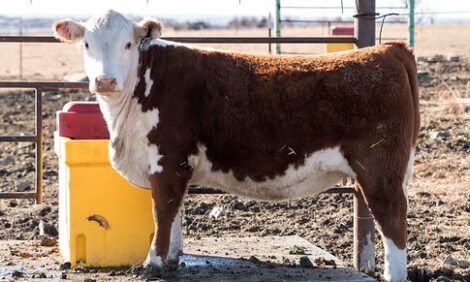



15 Ways to Reduce Somatic Cell Counts
With forthcoming guidelines for 400,000 somatic cell counts (SCCs), more and more dairy producers are driving down SCCs in their bulk tanks, but they always have room for improvement, even on the best operations.Some ways to improve their SCCs are:
1. Keep cows clean and dry at all times. This assures clean
teat surfaces and prevents bacteria from entering the
teat end.
2. Seek assistance from a qualified dairy professional
(veterinarian, milk plant field rep, milk equipment
dealer, Extension educator).
3. Do individual cow SCC tests monthly to help identify
herd trends and pinpoint the infected cows.
4. Run a monthly bulk tank culture through a reliable
laboratory to fi nd out what kinds of bacteria are causing
mammary infections.
5. If bulk tank culture results show a high level of
contagious mastitis pathogens (Staphylococcus aureus,
Streptococcus agalactiae or Mycoplasma), identify infected
cows by individual cow culturing. Reduce cow-to-cow
spread and remove the high-SCC quarters from the
milk supply.
6. If bulk tank culture results show high levels of
environmental pathogens (non-ag streps, coliforms
or staph species), improve bedding management and
pre-milking cow prep. Replace all organic bedding in
every stall weekly with clean bedding. Every day,
replace the bedding in the back half of the stall with
fresh, clean bedding. If you use sand bedding, add fresh,
clean sand at least once per week. Keep stalls leveled
and remove soiled sand daily.
7. Improve consistency in milking procedures. Include
a pre- and post-milking teat dip, 10 to 20 seconds of
cleaning, at least 30 seconds of contact time for the teat
dip, and a thorough teat end wiping before attaching the
milking unit. Plan routine to achieve 60- to 120-second
prep lag time.
8. Include forestripping during cow prep to identify
high-SCC quarters and keep milk from those quarters
out of the bulk tank.
9. Cull chronically high-SCC cows that do not respond
to therapy.
10. Treat all quarters of all cows at dry-off with an
approved dry cow intramammary tube.
11. Consider using a dry cow teat sealer.
12. Provide dry cows with adequate space, ventilation
and clean bedding (Minnesota Dairy Herd Improvement
Association records indicate that an average of 35 per cent
of cows and heifers calve with high SCCs).
13. Keep cows as cool and comfortable as possible during
hot weather.
14. Control flies.
15. Maintain milking equipment in good working order.
Develop a routine performance check and maintenance
program. Replace rubber parts at recommended
intervals. Be sure system cleaning is done consistently
and properly.


